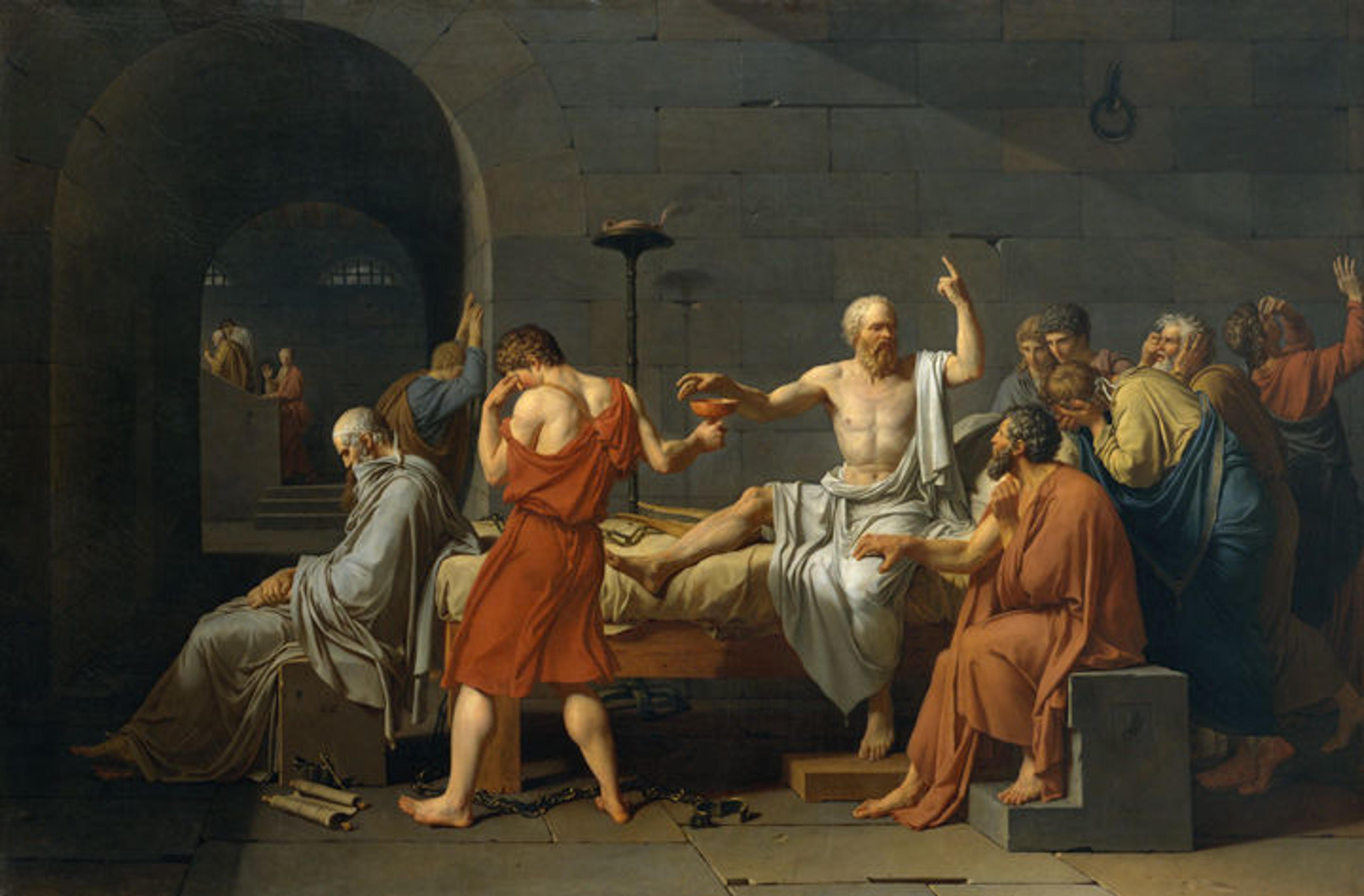Copying Valentin

Valentin de Boulogne (French, 1591–1632). Last Supper, 1625–26. Oil on canvas, 54 3/4 x 90 9/16 in. (139 x 230 cm). Galleria Nazionale d'Arte Antica, Palazzo Barberini, Rome (inv. 1362)
«A sure sign of an artist's importance is the number of copies their work inspires. What a surprise to find among the copyists of Valentin de Boulogne the great Neoclassical master Jacques Louis David (1748–1825), who made a copy after Valentin's Last Supper when he was in Rome in 1779. He sent the copy back to Paris and then, upon his return, retrieved it to keep in his studio. David exhibited the work in 1824, but alas, it no longer exists.»
The question is: Why the Last Supper, which most scholars consider to be Valentin's most conservatively composed picture? Indeed, if Valentin's picture reminds you of Leonardo da Vinci's famous mural in Milan, it's because an engraving of that work was the artist's point of departure.
What I think David admired was the range of expressions and hand gestures in Valentin's composition: each figure studied from life, each gesture calculated so as to convey a particular emotional response to Jesus's announcement that one of them would betray him. (Look at Judas trying to hide the money bag behind his back, his face invisible in the dark shadow that falls across it!)
All you need to do is think of one of The Met's sublime masterpieces by David, The Death of Socrates, to understand what Valentin's painting meant to the great Neoclassical painter.

Jacques Louis David (French, 1748–1825). The Death of Socrates, 1787. Oil on canvas, 51 x 77 1/4 in. (129.5 x 196.2 cm). The Metropolitan Museum of Art, New York, Catharine Lorillard Wolfe Collection, Wolfe Fund, 1931 (31.45)
Once again we find a range of expressions, this time in response to Socrates's discourse on the immortality of the soul as he prepares to die by drinking a cup of poison hemlock. David, like us, was evidently taken with the way Valentin gave emotional depth to his work through his mastery of facial expression and gesture. It's a virtuosity that runs through all of Valentin's paintings, which transforms the picture into a demonstration piece. David, of course, sought exemplary expressions for his figures—which were inspired by Roman sculpture rather than drawn from live models—but I think the debt to Valentin is apparent.
Related Links
Valentin de Boulogne: Beyond Caravaggio, on view at The Met Fifth Avenue through January 22, 2017
Keith Christiansen
Keith Christiansen, John Pope-Hennessy Chairman of the Department of European Paintings, began work at the Met in 1977, and during that time he has organized numerous exhibitions ranging in subject from painting in fifteenth-century Siena, Andrea Mantegna, and the Renaissance portrait, to Giambattista Tiepolo, El Greco, Caravaggio, Ribera, and Nicolas Poussin. He has written widely on Italian painting and is the recipient of several awards. Keith has also taught at Columbia University and New York University's Institute of Fine Art. Raised in Seattle, Washington, and Concord, California, he attended the University of California campuses at Santa Cruz and Los Angeles, and received his PhD from Harvard University.